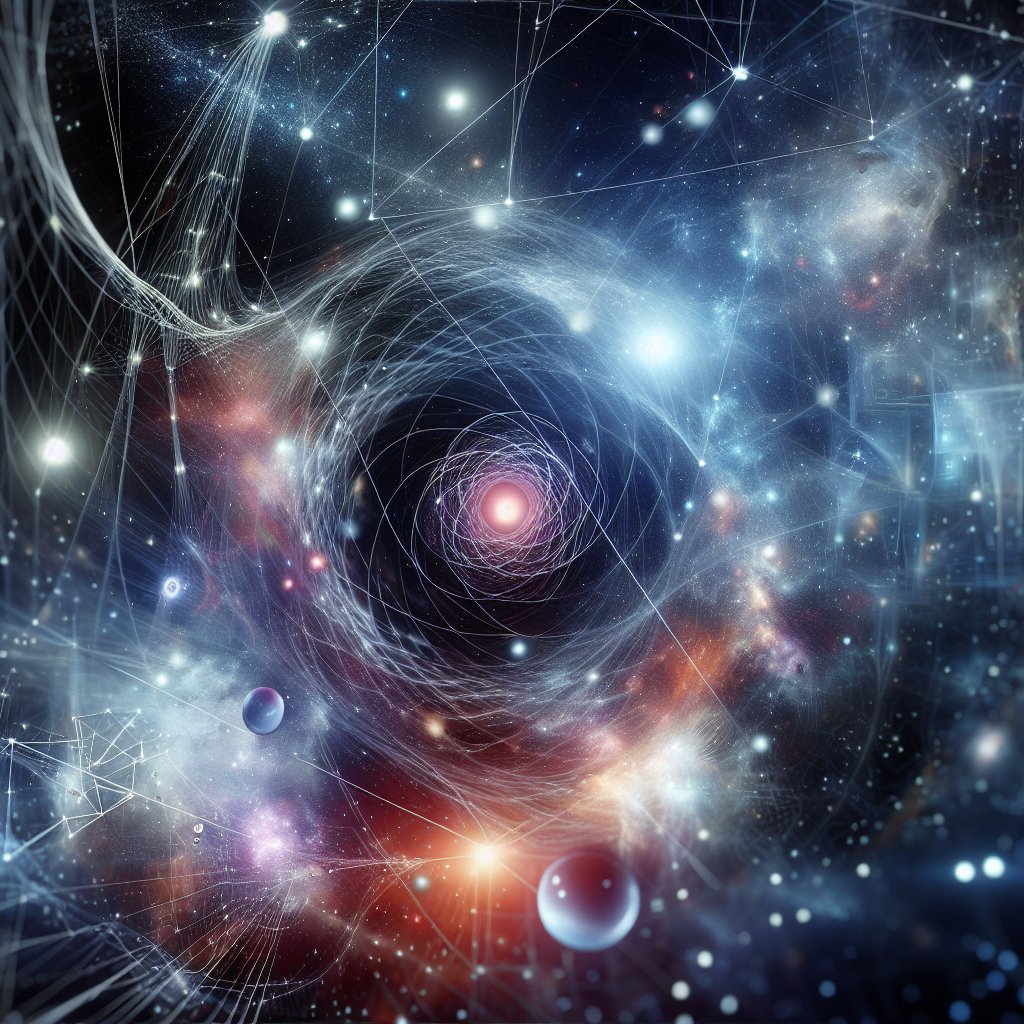String theory, a theoretical framework in which the point-like particles of particle physics are replaced by one-dimensional objects known as strings, has long intrigued physicists and cosmologists alike. Its potential to unify the fundamental forces of nature and provide a comprehensive understanding of the universe makes it a compelling area of study. In this article, we will explore the connection between string theory and cosmology, examining how this ambitious theory could reshape our understanding of the cosmos.
The Basics of String Theory
String theory emerged in the late 20th century as a promising candidate for a “theory of everything,” a framework that could reconcile general relativity, which describes gravity, with quantum mechanics, which explains the other three fundamental forces: electromagnetism, the weak nuclear force, and the strong nuclear force. At its core, string theory posits that the fundamental constituents of the universe are not zero-dimensional point particles, but rather one-dimensional “strings” that vibrate at specific frequencies.
These strings can be open or closed loops, and their vibrational modes correspond to different particles. For instance, a string vibrating in one way might manifest as an electron, while another mode of vibration might correspond to a photon. This elegant idea suggests that all particles are manifestations of the same fundamental entity, differing only in their vibrational states.
One of the most intriguing aspects of string theory is its requirement for additional spatial dimensions. While our everyday experience is limited to three spatial dimensions and one-time dimension, string theory suggests the existence of up to 11 dimensions. These extra dimensions are compactified, meaning they are curled up at scales so small that they are imperceptible to current experiments.
String Theory and the Early Universe
Cosmology, the study of the universe’s origin, evolution, and eventual fate, has long grappled with questions that string theory might help answer. One of the most significant challenges in cosmology is understanding the conditions of the early universe, particularly during the Planck epoch, a period immediately following the Big Bang when quantum gravitational effects were significant.
String theory offers a framework for exploring these extreme conditions. The theory’s ability to incorporate gravity at quantum scales provides a potential pathway to understanding the universe’s initial state. In particular, string theory’s extra dimensions could have played a crucial role in shaping the early universe’s dynamics.
One of the key concepts in this area is the idea of “brane cosmology.” In string theory, our universe could be a three-dimensional “brane” embedded in a higher-dimensional space. This perspective offers novel explanations for various cosmological phenomena, such as the nature of dark matter and dark energy, which remain some of the most profound mysteries in modern cosmology.
Inflation and String Theory
Inflation, a rapid expansion of the universe that occurred fractions of a second after the Big Bang, is a cornerstone of modern cosmological theory. It explains the large-scale structure of the universe and the uniformity of the cosmic microwave background radiation. However, the exact mechanism driving inflation remains unknown.
String theory provides several potential models for inflation. One such model involves the dynamics of branes in higher-dimensional space. As branes move and interact, they can trigger inflationary expansion. This approach not only offers a mechanism for inflation but also ties it to the fundamental structure of the universe as described by string theory.
Moreover, string theory’s landscape of possible vacua—different possible configurations of the universe’s fundamental fields—could provide a natural setting for inflation. The idea is that our universe is one of many possible vacua, and inflation is a process that selects and stabilizes a particular vacuum state.
Challenges and Criticisms
Despite its potential, string theory faces significant challenges and criticisms. One of the primary criticisms is its lack of empirical evidence. The energy scales at which string theory’s predictions become testable are far beyond the reach of current experiments, making it difficult to verify or falsify the theory.
Additionally, the theory’s reliance on extra dimensions and a vast landscape of possible vacua has led some to question its predictive power. With so many possible configurations, critics argue that string theory can be made to accommodate almost any observational data, reducing its scientific utility.
Nevertheless, string theory continues to be a vibrant area of research. Its mathematical elegance and potential to unify disparate areas of physics make it an attractive framework for theoretical exploration. Moreover, advances in related fields, such as quantum gravity and holography, continue to provide new insights and avenues for testing string theory’s predictions.
The Future of String Theory and Cosmology
As our understanding of the universe deepens, the interplay between string theory and cosmology is likely to become increasingly important. Future observations, such as those from next-generation telescopes and experiments probing the cosmic microwave background, may provide indirect evidence supporting string theory’s predictions.
Moreover, developments in theoretical physics, such as the AdS/CFT correspondence—a duality that relates a gravitational theory in a higher-dimensional space to a quantum field theory in lower dimensions—offer promising avenues for connecting string theory with observable phenomena.
In conclusion, while string theory remains a speculative and unproven framework, its potential to illuminate the fundamental nature of the universe is undeniable. As researchers continue to explore its implications for cosmology, we may find that string theory offers profound insights into the origins and fate of the cosmos, reshaping our understanding of the universe in ways we can only begin to imagine.










